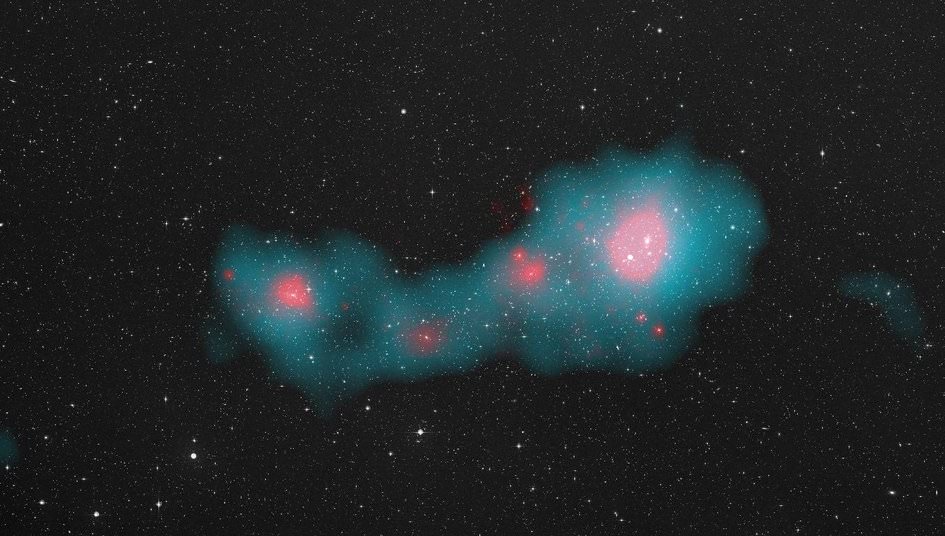With two days left before Planck switches off forever, the European Space Agency re-posted this beautiful image the telescope recently assisted in taking. It shows the Shapley Supercluster, which ESA describes as the biggest cosmic structure in our neighborhood.
First discovered in the 1930s by Harlow Shapley, a U.S. astronomer, the structure has more than 8,000 galaxies and a mass that is 10 million billion times that the mass of the Sun, ESA added. The blue parts are detections by Planck, and the Rosat satellite imaged the pink sections. Visible wavelengths shown in the picture come from the Digitised Sky Survey.
Today (Oct. 21), ESA will order Planck to run its thrusters to empty. After years hovering at a Lagrange point, the telescope will be put in a “parking orbit” to circle the sun, keeping it away from the Earth and moon for at least several centuries. The last command will be sent Oct. 23.
Among other milestones, Planck released a cosmic map in March refining the Universe’s age to 13.82 billion years.

